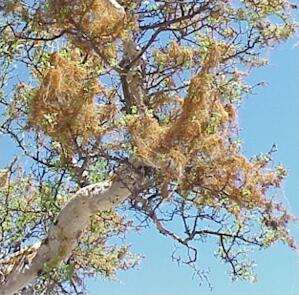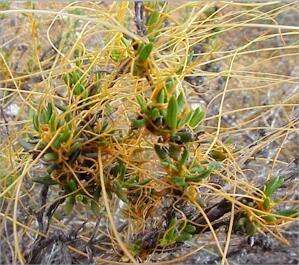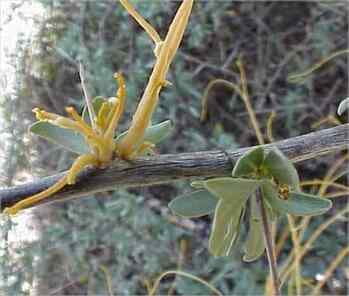DODDER (Cuscuta species) Dodder is a well-known parasitic plant that is sometimes seen in deserts, when its yellow, tangled stems climb over desert shrubs such as creosote bush, mesquite, burrobush, etc. There are many species of dodder, found in many parts of the world, and they are difficult to tell apart. But all have the same characteristic feature - they are parasitic higher plants, which lack chlorophyll and thus depend on their host plants for their life support. Dodder seeds germinate on the surface of a host plant, or in soil, then the young seedling winds round the stem of a host plant and produce a special nutrient-absorbing structure - a haustorium - which taps into the host plant to obtain both sugars and water. Dodder then produces many more thin yellow stems that twine round the host and produce further haustoria. Eventually, a large mass of these stems can almost completely cover the host plant. Some species of dodder can parasitise a wide range of host plants. Others may be more host-restricted. In any case, a heavy infestation by dodder can be expected to cause significant damage to the host plant, especially in marginal conditions when water is in short supply.
|


